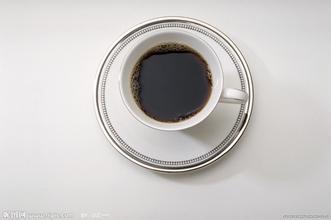Several practical principles for judging coffee how to express the flavor of coffee
The first principle for judging coffee: [clean]
It is clean when it is light and even cleaner when it is thick.
It's like a room, it's easy to be clean when it's empty, but it has to be clean when it's full.
The second principle of judging coffee: [spindle taste]
That is, it represents the characteristics of this producing area. Cleanliness is the foundation, and a dirty cup of coffee represents a flaw.
But clean coffee can easily become tasteless, so it must have a spindle flavor.
The taste of this spindle is from hot to cold, any cooking method, any baking degree.
No shallow baking, no deep baking or no shallow baking, and the same is true of cooking.

The third principle for judging coffee: [position]
If there is a taste, there must be a place. If you say there is a taste of wild ginger flowers, please mark the location of the flavor.
If you can't mark it, then the taste may be just a textual description of the cup test report, which you can imagine.
The fourth principle of judging coffee [mobile path]
The smell will not just be fixed in a certain position, it will move. If it's fixed in a certain position, then the smell is dead.
If the taste doesn't change from beginning to end, it's also dead. Good coffee is live.
Will leave footprints in every place that feels.
The fifth principle of judging coffee-- [hierarchy]
The layer is the arrangement of hierarchy, and the second is orderly. It's an orderly arrangement. [hierarchy] includes at least 7 categories.
Thickness, depth, weight, strength, thickness, width, rigidity and softness.
The sixth principle of judging coffee [richness and complexity]
The so-called [richness]-the rich are more beautiful, and the rich are full, which refers to [sufficient and beautiful taste]
[complexity], the repetition is heavy, and the clutter is chaotic, which means [a similar and messy taste].
All the good tastes are called rich, and the five tastes are called complex.
Important Notice :
前街咖啡 FrontStreet Coffee has moved to new addredd:
FrontStreet Coffee Address: 315,Donghua East Road,GuangZhou
Tel:020 38364473
- Prev

The expression of alcohol and strength in the analysis of coffee components
For coffee, the touch of the mouth and palate comes from fatty oil, a liquid ingredient insoluble in water, and a sediment suspended in coffee water after brewing. In addition to providing texture for the overall taste of coffee, suspended matter in coffee also affects the taste of coffee by forming colloids. 1.Fatty oil raw coffee beans contain 7% Mui 17% fat.
- Next

Coffee excipients introduce the types and usage of water
The classification and usage of water water can be divided into soft water and hard water. After the conversion of the amount of water dissolved in water, the amount of water is less than that of hard water. Ordinary mineral water is hard water containing salt, etc., because hard water releases caffeine and tannins, which greatly reduces the taste of coffee. Ordinary tap water can be used as hot water, but early
Related
- Detailed explanation of Jadeite planting Land in Panamanian Jadeite Manor introduction to the grading system of Jadeite competitive bidding, Red bid, Green bid and Rose Summer
- Story of Coffee planting in Brenka region of Costa Rica Stonehenge Manor anaerobic heavy honey treatment of flavor mouth
- What's on the barrel of Blue Mountain Coffee beans?
- Can American coffee also pull flowers? How to use hot American style to pull out a good-looking pattern?
- Can you make a cold extract with coffee beans? What is the right proportion for cold-extracted coffee formula?
- Indonesian PWN Gold Mandrine Coffee Origin Features Flavor How to Chong? Mandolin coffee is American.
- A brief introduction to the flavor characteristics of Brazilian yellow bourbon coffee beans
- What is the effect of different water quality on the flavor of cold-extracted coffee? What kind of water is best for brewing coffee?
- Why do you think of Rose Summer whenever you mention Panamanian coffee?
- Introduction to the characteristics of authentic blue mountain coffee bean producing areas? What is the CIB Coffee Authority in Jamaica?

